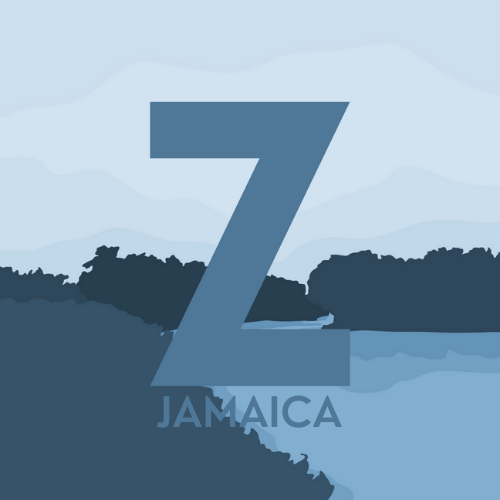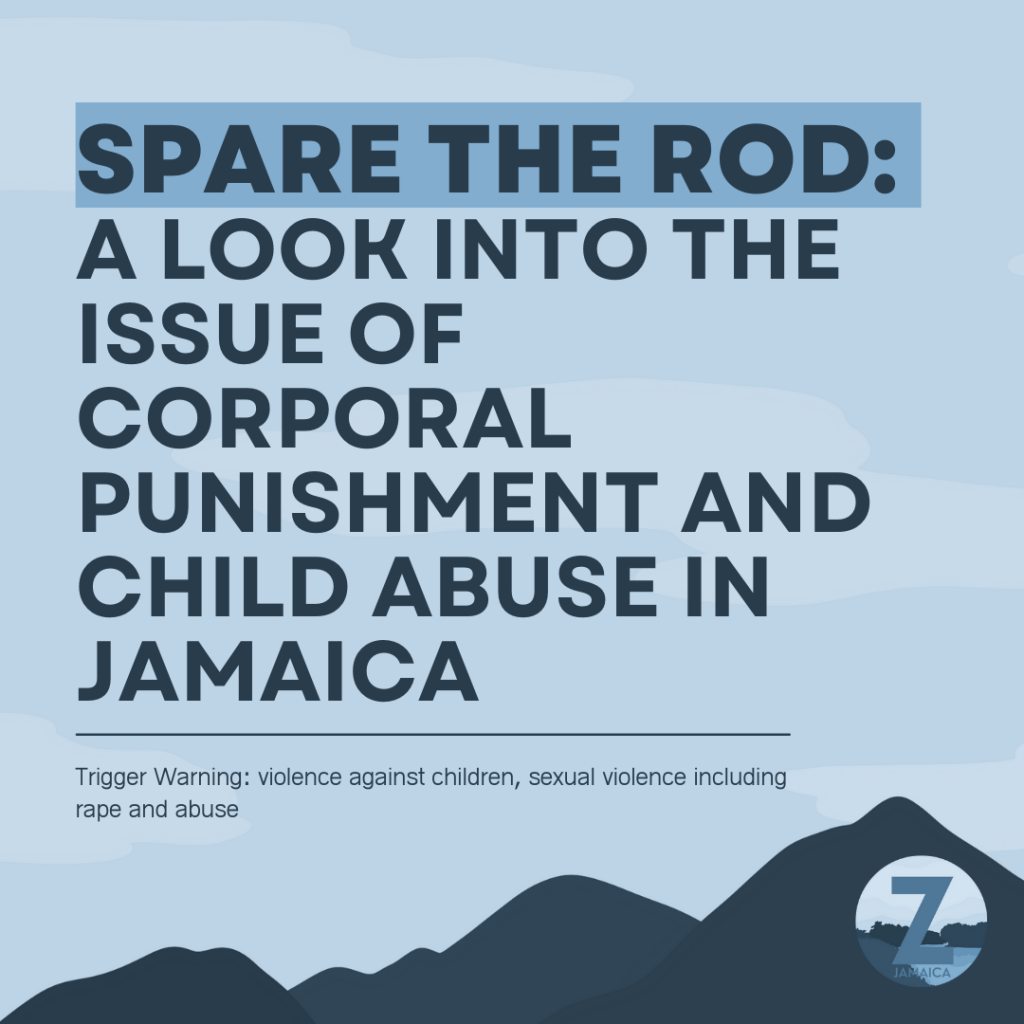by Jahnaya Anderson | November 15, 2021
A look into corporal punishment and child abuse in Jamaica.
Tragic News
Many Jamaican parents strongly believe in corporal punishment as an effective method of discipline, but where do we draw the line? On July 18, 2021, four-year-old Nashawn Brown, was allegedly beaten with a stick repeatedly by his stepfather causing severe bruising and swelling to the boy’s upper and lower limbs. Nashawn died, merely because he was not feeling well and ate dinner slowly. Because of this, Prime Minister Andrew Holness said he would be pushing on the call for a ban on corporal punishment as a child-rearing tool. This got a lot of mixed reviews with some agreeing and others insisting it is a must. “Discipline should not cause any harm to children and it should never be a death sentence,” says Mariko Kagoshima, UNICEF Jamaica Representative.
The Root of Corporal Punishment
“West Africans believed that children came from the afterlife, that they were reincarnated ancestors who led profoundly spiritual lives and held extraordinary mystical powers that could be harnessed through ritual practice for the good of the community. It was believed that coercion and hitting a child could scare off their soul.” The practice of beating your children to punish or teach them to obey the rules came from ancestral trauma gained from the enslaved people who were also beaten into submission. They were whipped as a way to ‘keep them in line’ or punish them and this mindset from the many traumatic years still flows through the veins of Jamaican citizens today.
Corporal punishment is any punishment in which physical force is used (spanking, hitting, slapping, pinching, shoving, or choking), with the intent to cause some degree of pain or discomfort on a child. In Jamaica, corporal punishment is legal in the home under the common law right to inflict “reasonable and moderate” punishment, even though the Committee on the Rights of the Child has twice recommended that the Government of Jamaica enact legislation to prohibit corporal punishment of children.
On the Fence
Evidently seen in our culture, beating your child as a means of discipline has been accepted by society in Jamaica for many years and has also been a frequent topic of discussion–considering some mixed feelings towards it. In 2008-2009 a study was carried out involving 6,435 residents with children, of which half reported that children in their home were punished by being hit, beaten, spanked, or slapped. One mother mentioned that she believes disciplining your child and abusing your child are two different things and it “truly can only be differentiated by your end of the spectrum.”
Some others have different thoughts on corporal punishment, as they believe beating children causes more harm than good.
- “UNICEF Renews Call for Ban on Corporal Punishment”,
- “Prime Minister Hints at Legislation to Ban Corporal Punishment”,
- “Gov’t Intensifying Zero-Tolerance Approach to Corporal Punishment in Schools’”.
With distinct headings like these you’d think people would become more aware of the dangers that corporal punishment can have on children, but evidently not.
Corporal Punishment and Child Abuse go Hand in Hand
The line between corporal punishment and child abuse is very thin. It is said that corporal punishment is solely the disciplinary actions towards a child that, if excessive, can turn into child abuse. Child abuse is defined as any act or failure to act, on the part of a parent or caretaker, which results in the death, serious physical or emotional harm, sexual abuse, or exploitation of a child. It can present itself in several ways including sexual, emotional, or physical abuse, neglect, as well as trafficking (see ‘Jamaica Lives for Sale?’ article on our website).
Types and examples of Child Abuse (not limited to)
- Physical Abuse
- Burning with irons, pans, etc
- Suffocation by choking, and other means
- Poisoning by way of food
- Whippings with wires, ropes, hoses, branches, etc
- Withholding sleep, food, or medication
- Emotional Abuse
- Not allowing children to express their views and opinions, by way of beatings
- Silencing them by frequently shouting at or threatening them,
- Telling them they are ‘no good’ or ‘a mistake’.
- Physically abusing them and manipulating them to be emotionally dependent on you
- Neglect
- Not providing basic needs such as food, shelter, clothing, or medical care,
- Locking a child in a room or closet,
- Leaving a child alone for a long time or so that they intentionally experience harm
- Leaving a child in the care of someone who physically (or sexually) harasses or assaults them
- Sexual Abuse
- Assault by penetration, such as rape or oral sex
- Forcing or inviting a child to undress for your sexual gratification
- “Flashing” or showing one’s genitals to the child, grooming or preparing for future abuse or activity.
- Leaving a child alone with someone you suspect views them in a sexual or perverted way
Effects of Child Abuse
“Growing up, my father would verbally and physically abuse me. I would regularly go to school with a swollen face and packs of tissues for ‘the bleeding’. I remember one night, my father came home from work and beat me so badly, a neighbour had to rush me to the hospital where I stayed for a month due to previous injuries also caused by him,” recalled a 25-year-old victim of child abuse in an interview. Instances like this lead to severe mental health issues among children in Jamaica.
Aside from the immediate physical injuries, children can experience through maltreatment, a child’s reactions to abuse or neglect can have lifelong and even intergenerational impacts. In some cases, abuse or neglect can affect the development of a child’s brain and lead to psychological problems, such as low self-esteem, which could later lead to high-risk behaviors, such as substance use. Many people suffer from Post-Traumatic Stress Disorder (PTSD) as a result of child abuse, for example:
- They may flinch at the raise of a hand
- Face insomnia due to nightmares of the traumatic events
- Experience recurring anxiety/panic attacks or mood swings throughout the day
Covid-19 and Child Abuse
With the pandemic lasting for over a year and a half, stressful parents and ‘frustrating online classes,’ an increase in child abuse cases would be expected however, in May earlier this year, the National Children’s Registry (NCR) noted that fewer reports of child abuse were recorded during the COVID-19 period in comparison to prior years. According to the registry, before 2020, an average 1,200 cases of child abuse were reported per month while in 2020 and 2021 there have been between 800 and 900 reports per month.
However, months later, Rosalee Gage-Grey, chief executive officer of the Child Protection and Family Services Agency (CPFSA) said that In 2020 the CPFSA received 9,800 cases of abuse against children and over 5,500 cases of child abuse were reported since the start of 2021. This shows that child abuse still remains a chronic problem in Jamaica and calls for immediate strong intervention.
If you or someone you know are victims of child abuse, call the 24-hour child abuse hotline 211 or visit the nearest police station.


Leave a comment